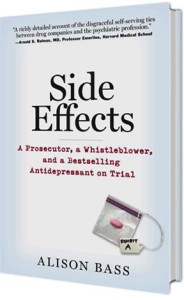Just yesterday, Senators Charles Grassley and Herbert Kohl announced that language requiring the public disclosure of payments to doctors from drug and medical device companies has been included in the draft bills for health care reform now being debated in the House and Senate. In case you haven’t been convinced by the parade of doctors on the take (who in some cases were found to have skewed scientific data as a result of their conflicts of interest), here’s one more reason why public disclosure of such conflicts is so important.
On June 30, the British Medical Journal published a meta-analysis purporting to show that cholesterol-lowering statins reduce the risk of heart attacks and improve survival rates in people without established heart disease. Up till now, evidence that statins like Lipitor, Crestor, Zocor and Pravachol prevent heart attacks in people without known heart risks remains ambiguous at best. And there is little evidence that statins reduce the risk of heart attacks in women, since most of the clinical trials have been in men. Now comes a meta-analysis that examines 10 previous clinical trials and concludes that lo and behold, statins do improve survival rates for men and women and other groups not previously shown to be helped by these drugs.
But before you break out the champagne, please consider these caveats. First off, as Gary Schwitzer pointed out in his health news blog, not everyone is convinced this meta-analysis shows what its authors claim it does. As one online commentator noted, if you look carefully at the data in the study, there is no evidence that the benefits of statins are significant for all 4 end points listed in women, people over the age of 65 and patients with diabetes. And as other commentators noted, the study also doesn’t pay much attention to the serious side effects of statins or the fact that there are safer ways to reduce cardiovascular risk, such as exercise and dietary changes.
But what bothers me most about this meta-analysis are the substantial conflicts of interest among six of its 12 authors, most of whom are doctors. According to the fine print at the end of the BMJ study itself, six of the authors are consultants for one or more of the drug companies that make statins, which, by the way, are among the top five classes of drugs sold in the US today. For example, two of the authors are consultants for Merck, which makes Zocor; another researcher, a professor at Cornell University, consults for Bristol-Myers Squibb, which makes Pravachol, another statin; a third has received speaking fees from Pfizer, which makes Lipitor, and a fourth researcher has consulted for Astra-Zeneca, which makes Crestor, as well as Merck. One of the authors (who like six of his colleagues hails from the Netherlands) also sits on the board of two biotech-pharm companies (Aegerion and Arisaph), which are developing cholesterol-lowering drugs. Still another co-author (the one who consults for both Merck and Astra-Zeneca) has developed cardiovascular biomarkers that have been licensed to Siemens and Astra-Zeneca.
In sum, what we have here is a study rife with conflicts of interest. But what we don’t know from the fine print is how much these fine fellows are making from their ties to the statin industry; is it $10,000 a year, $100,000 or a $1 million? As I’ve reported in previous blogs and Side Effects, even a little money can affect the outcome of clinical research and a lot of money can affect it a lot.
That’s why we so badly need public disclosure of the financial ties between specific health professionals and health product companies. So consumers can see for themselves just how conflicted the researchers of a particular study are and decide for themselves how much weight they want to give the study’s results. In the absence of such key information, I’d have to agree with one of the online commentators on the BMJ study: that the jury is still out when it comes to the benefit of statins in reducing the risk of heart attacks in folks without known heart problems.



7 Comments